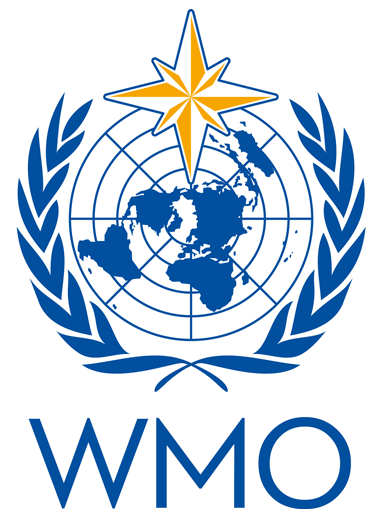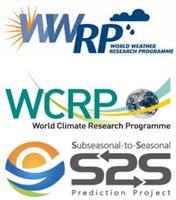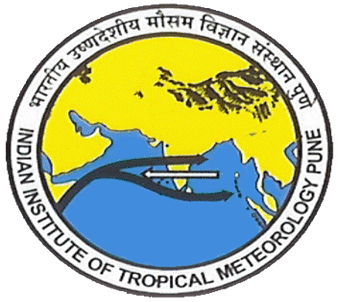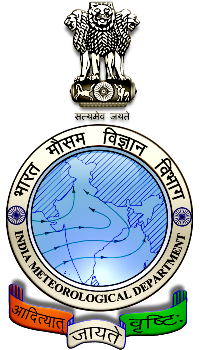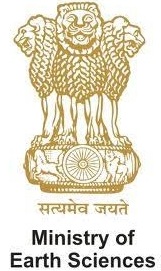Background
The International Workshop on Monsoons (IWM) is a major quadrennial symposia/workshops series under the World Weather Research Programme (WWRP) of the World Meteorological Organization (WMO). The latest in the series, the Sixth International Workshop on Monsoons (IWM-6), was held in Singapore in November 2017 The seventh workshop (IWM-7) will be jointly organized in India by the India Meteorological Department, Ministry of Earth Sciences, Government of India and the WWRP Working Group on Tropical Meteorology Research (WGTMR), in cooperation with the CLIVAR/GEWEX Monsoon Panel of the World Climate Research Programme (WCRP).
The IWM series provide a forum for researchers and forecasters to discuss recent advances and current issues involving monsoons as an example of an earth-system phenomenon covering weather-to-climate time scales affecting large populations around the world. The emphasis is to address monsoon impacts as part of the societal challenges of the WWRP: high-impact weather, water, agriculture, urbanization, and new technologies, in monsoon regions around the world. The outcomes of IWM are sought to transfer new science and technology to National Meteorological and Hydrological Services over the relevant monsoon regions. The IWM-7 has two components, an online training workshop in November 2021 and a scientific workshop during 23-26 March 2022 (New Delhi, India).
The training workshop will be focused on the subseasonal to seasonal (S2S) prediction of monsoons and will offer short courses to NMHS forecasters. Specific topics will include:
- S2S predictability sources;
- Access to the S2S database and tools;
- Model validation and forecast verification;
- Calibration and ensemble techniques.
A pre-workshop orientation course will be offered before the main training workshop to introduce and facilitate the data and tools to be compiled by the trainees in advance and to familiarize the trainees with the workshop procedures including the practical sessions.
More information on the training workshop will be made available on this web page in due course. Interested participants may please register at this website by 2 August 2021. As the workshop can accommodate only a limited number of participants, preference will be given to those with suitable competencies nominated by the Permanent Representatives of the respective countries with WMO, early career scientists, women and developing countries.
About
World Meteorological Organization
The World Meteorological Organization (WMO) is a specialized agency of the United Nations (UN) with 193 Member States and Territories. It is the UN System's authoritative voice on the state and behaviour of the Earth's atmosphere, its interaction with the land and oceans, the weather and climate it produces and the resulting distribution of water resources.
Within its mandate in the areas of weather, climate and water, WMO focuses on many different aspects and issues from observations, information exchange and research to weather forecasts and early warnings, from capacity development and monitoring of greenhouse gases to application services and much, much more.
Through its Technical Commissions, Programmes, Projects and Regional Offices as well as by synergistic partnerships, WMO facilitates the maintenance and expansion of its Members atmospheric, oceanographic and land-based observational networks the free unrestricted exchange of the resulting data and information and related capacity development and research to optimize the production of weather, climate and water-related services worldwide.
World Weather Research Programme
The World Weather Research Programme (WWRP) is the WMO international programme for advancing and promoting research activities on weather, its prediction and its impact on society. The Improvements in science and operational predictions are driven by international cooperation, and in turn, international cooperation in weather science is a unique opportunity to drive sustainable development.
As the science is advancing, critical questions are arising such as the potential sources of predictability on weekly, monthly and longer time scales; seamless prediction from minutes to months; optimal use of local and global observing systems and the effective utilization of supercomputers.
In addition, communication of forecasts, warnings and their uncertainty, as well as some indication of the impacts of these warnings, raise new challenges for weather-related approaches for the full value chain. All of these challenges can only be met through strong interdisciplinary collaborations and thus WWRP relies on strong links with social scientists, as well as the inclusion of Early Career Scientists.
World Climate Research Programme
Through international science coordination and partnerships, the World Climate Research Programme (WCRP) contributes to advancing our understanding of the multi-scale dynamic interactions between natural and social systems that affect climate. WCRP engages productively through these partnerships to inform the development of policies and services and to promote science education. Most critically, WCRP-supported research provides the climate science that underpins the United Nations Framework Convention on Climate Change.
Subseasonal-to-Seasonal Prediction Project
The Subseasonal-to-Seasonal prediction project (S2S) started in 2013 as a collaborative structure set up by WWRP and WCRP to address the challenges of predictions on the sub-seasonal to seasonal time-scale. The project brings together the weather and climate research communities to leverage their expertise for improving predictions on the timescales of particular relevance to the Global Framework for Climate Services (GFCS).
Ministry of Earth Sciences
The Ministry of Earth Sciences (MoES) of the Government of India is mandated to provide services for weather, climate, ocean and coastal state, hydrology, seismology, and natural hazards; to explore and harness marine living and non-living resources in a sustainable way and to explore the three poles (Arctic, Antarctic and Himalayas). It has 2 subordinate offices, 3 attached offices and 5 autonomous institutes working under it to fulfil these mandates.
India Meteorological Department
The India Meteorological Department (IMD) is the National Meteorological Service of the country and the principal government agency in all matters relating to meteorology and allied subjects. IMD was established in 1875.
The mandates of IMD are to take meteorological observations and to provide current and forecast meteorological information for optimum operation of weather-sensitive activities like agriculture, irrigation, shipping, aviation, offshore oil explorations, etc.; to warn against severe weather phenomena like tropical cyclones, norwesters, duststorms, heavy rains and snow, cold and heat waves, etc., which destroy life and property; to provide meteorological statistics required for agriculture, water resource management, industries, oil exploration and other nation-building activities; to conduct and promote research in meteorology and allied disciplines.
Indian Institute of Tropical Meteorology
The Indian Institute of Tropical Meteorology (IITM) is an autonomous Institute under the Minstry of Earth Scieces (MoES), Govt of India. It is a premier research Institute to generate scientific knowledge in the field of meteorology and atmospheric sciences that has potential application in various fields such as agriculture, economics, health, water resources, transportation, communications, etc. It functions as a national centre for basic and applied research in monsoon meteorology.
International Monsoons Project Office
The International Monsoons Project Office (IMPO), hosted by IITM, is India's contribution to WMO's monsoon research coordination activities under WWRP and WCRP. IMPO functions as a global hub of monsoon research coordination, covering all monsoon regions of the world and spanning weather to climate change time scales.
One of the core responsibilities of the IMPO is to support the activities of the CLIVAR/GEWEX Monsoons Panel. IMPO also supports cross-panel linkages within the working structure of the WCRP and its core projects as well as WWRP substructures, on monsoon-related matters. A key example in this regard is the Indian Ocean Region Panel (IORP) under CLIVAR. In addition, IMPO supports the IWM Series of workshops and the associated activities.
Registration
Presentations and Recordings
The following are the daily recordings and presentations made in the workshop:
Useful Links
- Virtual International Conference on Future Directions of Subseasonal to Seasonal Prediction over South Asia:
- IITM and the WMO/WWRP/WCRP S2S Project have jointly organized this conference from 29-31 March 2021, featuring a number of talks by renowned experts around the world reviewing our current abilities to make skilful predictions on S2S scale and to identify new initiatives, collaborations, and emerging science questions. All the presentations as well as daily video recordings are available at this link, which can provide very useful scientific context to the present workshop.
- WWRP/WCRP S2S Prediction Project
- International Research Institute for Climate and Society (IRI), USA
- S2S Database resources at IRI
- S2S Database at IRI Data Library
- How-To: IRI Data Library for S2S Climate Data
- SubX Database at IRI
- IRI BitBucket: PyCPT
- Subseasonal probabilistic forecasts of precipitation and temperature (issued routinely in real time every Friday by IRI, based on SubX models)
- European Centre for Medium range Weather Forecasts (ECMWF)
- S2S Data Portal at China Meteorological Administration (CMA)
- S2S Museum
- SubX Project
- S2S Related Products at Tokyo Climate Center
- Real-time Extended Range Forecasts for South Asia (India Meteorlogical Department)
- Extended Range Prediction for Applications to Society (IITM)
- Monitoring and forecast of IntraSeasonal Variability over Africa (MISVA)
- WMO Lead Centre for Long Range Forecast Multi-Model Ensemble (LC-LRFMME)
International Organizing Committee (IOC)
Co-Chairs
- Àngel Muñoz, International Research Institute for Climate and Society (IRI), USA and Member, WCRP Working Group on Subseasonal to Interdecadal Prediction (WGSIP)
- Rupa Kumar Kolli, International Monsoons Project Office, Indian Institute of Tropical Meteorology (IITM), India and Co-Lead, WMO Expert Team on Climate Services Information System Operations (ET-CSISO)
Members
- Ajit Tyagi, Former Director General of Meteorology, India and Member, WWRP Working Group on Tropical Meteorology Research (WGTMR) & IOC, IWM-7
- Andre Kamga Foamouhoue, African Centre for Meteorological Applications for Development (ACMAD), Niger
- Andy Robertson, IRI, USA and Co-Chair, WWRP/WCRP S2S Prediction Project Steering Group & Member, ET-CSISO
- Arun Kumar, Climate Prediction Center, National Weather Service, USA and Chair, WMO Expert Team on Operational Climate Prediction System (ET-OCPS)
- Atul Kumar Sahai, IITM, India and Member, WWRP Scientific Steering Committee (SSC)
- Caio Coelho, Centre for Weather Prediction and Climate Studies, Brazil and Vice-Chair, ETOCPS & Member, ET-CSISO
- D.S Pai, Climate Research and Services, India Meteorological Department, India and Member, WMO Expert Team on Capacity Development for Climate Services and Communications (ET-CDC)
- Harry Hendon, Bureau of Meteorology, Australia and Member, WWRP/WCRP S2S Prediction Project Steering Group
- Hong-Li Ren, Chinese Academy of Meteorological Sciences, China and Member, WCRP WGSIP
- Hyung Jin Kim, International Coordination Office for WMO S2S Prediction Project, Korea
- June-Yi Lee, Pusan National University and Institute for Basic Science Center for Climate Physics (ICCP), Korea and Co-Chair, WCRP WGSIP
- Maria Silva Dias, University of São Paulo, Brazil and Member, WWRP WGTMR
- Raizan Rahmat, Weather Services Division, Meteorological Service Singapore
- Thierry Lefort, National School of Meteorology, Meteo France
- Yuhei Takaya, Meteorological Research Institute, Japan and Member, WCRP WGSIP & WMO S2S Prediction Project Steering Group
- Yukari Takayabu, University of Tokyo, Japan, Co-Chair, WWRP WGTMR and Member, WCRP CLIVAR/GEWEX Monsoons Panel
- Zhuo Wang, University of Illinois at Urbana-Champaign, USA and Co-Chair, WWRP WGTMR
Contact
Indian Institute of Tropical Meteorology
Homi Bhabha Road
Pune 411008, India
Email:
icmpo_events@tropmet.res.in

